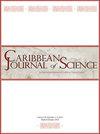Soil analysis to identify precolonial salt production in the Turks & Caicos Islands, the Caribbean
IF 0.5
4区 生物学
Q4 BIODIVERSITY CONSERVATION
引用次数: 0
Abstract
Abstract. This article shows how archaeological and geological data can be used to visualize the ‘invisible’ production of salt through solar evaporation in the archaeological record. Evidence of salt exploitation from natural salt ponds is difficult to obtain using standard archaeological methods, limiting our ability to assess the significance of these practices in the past. Salt, however, was an important and valuable resource in many different cultural contexts. This study follows on previous research of a precolonial site on Middle Caicos, Turks & Caicos Islands, which suggested a relationship between this settlement and the exploitation of salt at the adjacent natural salt pan. Coring techniques were used to visualize and determine the pre-colonial availability of salt at MC-6. Stratigraphic sequences in the salt pond provided a detailed perspective on the pond's dynamic past and confirmed that salt production was possible in precolonial times. The research presented here tested the applicability of phosphorus and chloride values and X-ray diffraction of soil to identify precolonial salt production. Data from the site and the pond suggest that people settled the village as soon as the pond began producing salt, linking the presence of people to the availability and possible exploitation practices of salt.土壤分析,以确定加勒比海特克斯和凯科斯群岛殖民前的盐生产
摘要这篇文章展示了如何使用考古和地质数据来可视化考古记录中通过太阳蒸发产生的“隐形”盐。使用标准考古方法很难获得从天然盐池开采盐的证据,这限制了我们评估这些做法在过去意义的能力。然而,在许多不同的文化背景下,盐是一种重要而宝贵的资源。这项研究是在先前对特克斯和凯科斯群岛中凯科斯群岛的一个殖民前遗址进行研究的基础上进行的,该研究表明该定居点与邻近天然盐田的盐开采之间存在关系。取芯技术用于可视化和确定MC-6盐在殖民前的可用性。盐池中的地层序列为盐池的动态历史提供了详细的视角,并证实了在前殖民时代产盐是可能的。本文的研究测试了磷和氯化物值以及土壤的X射线衍射对识别前殖民地盐生产的适用性。现场和池塘的数据表明,池塘一开始生产盐,人们就定居在村庄里,这将人们的存在与盐的可用性和可能的开采实践联系起来。
本文章由计算机程序翻译,如有差异,请以英文原文为准。
求助全文
约1分钟内获得全文
求助全文
来源期刊

Caribbean Journal of Science
综合性期刊-生物多样性保护
CiteScore
1.00
自引率
25.00%
发文量
21
审稿时长
>12 weeks
期刊介绍:
The Caribbean Journal of Science publishes articles, research notes, and book reviews pertinent to natural science of the Caribbean region. The emphasis is on botany, zoology, ecology, conservation biology and management, geology, archaeology, and paleontology. The mission as a nonprofit scholarly journal is to publish quality, peer-reviewed papers and to make them widely available.
 求助内容:
求助内容: 应助结果提醒方式:
应助结果提醒方式:


